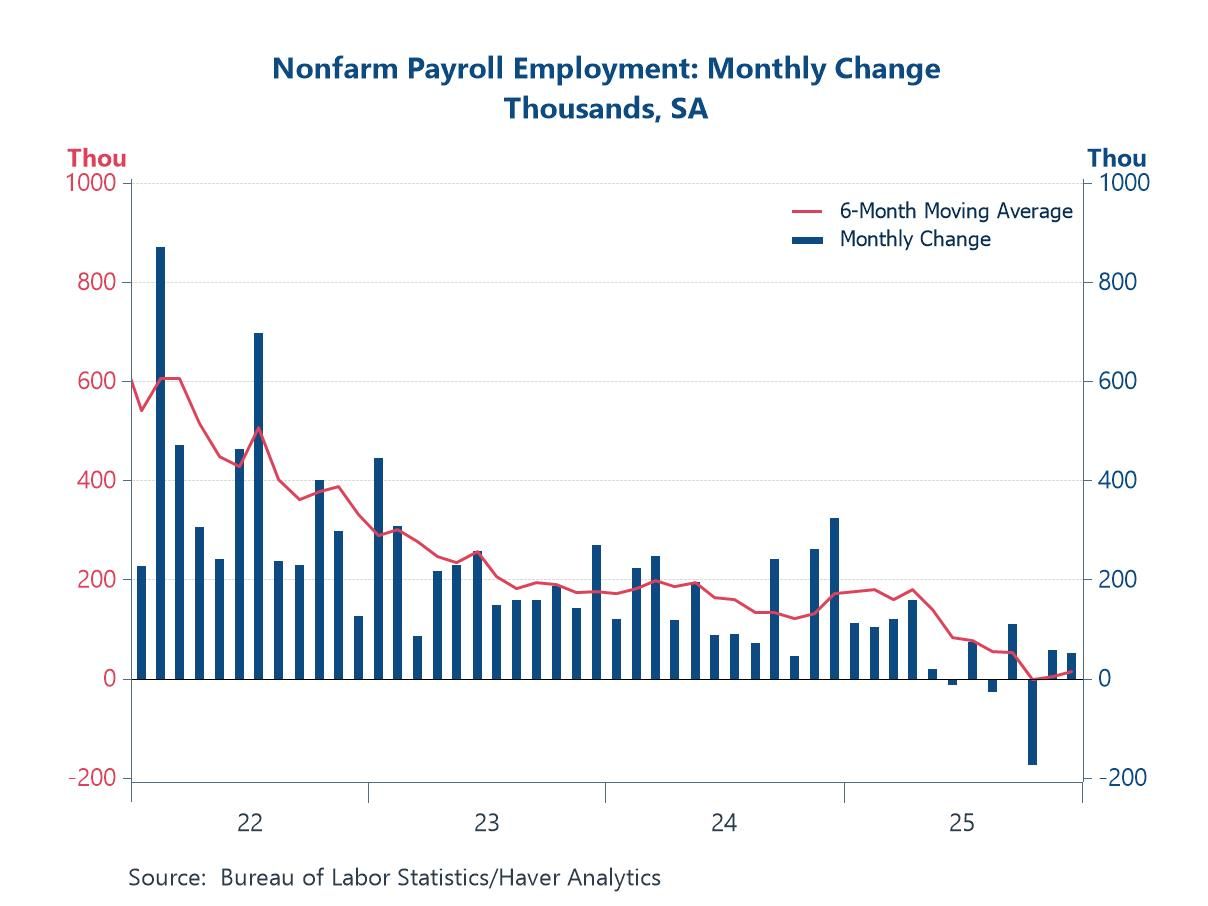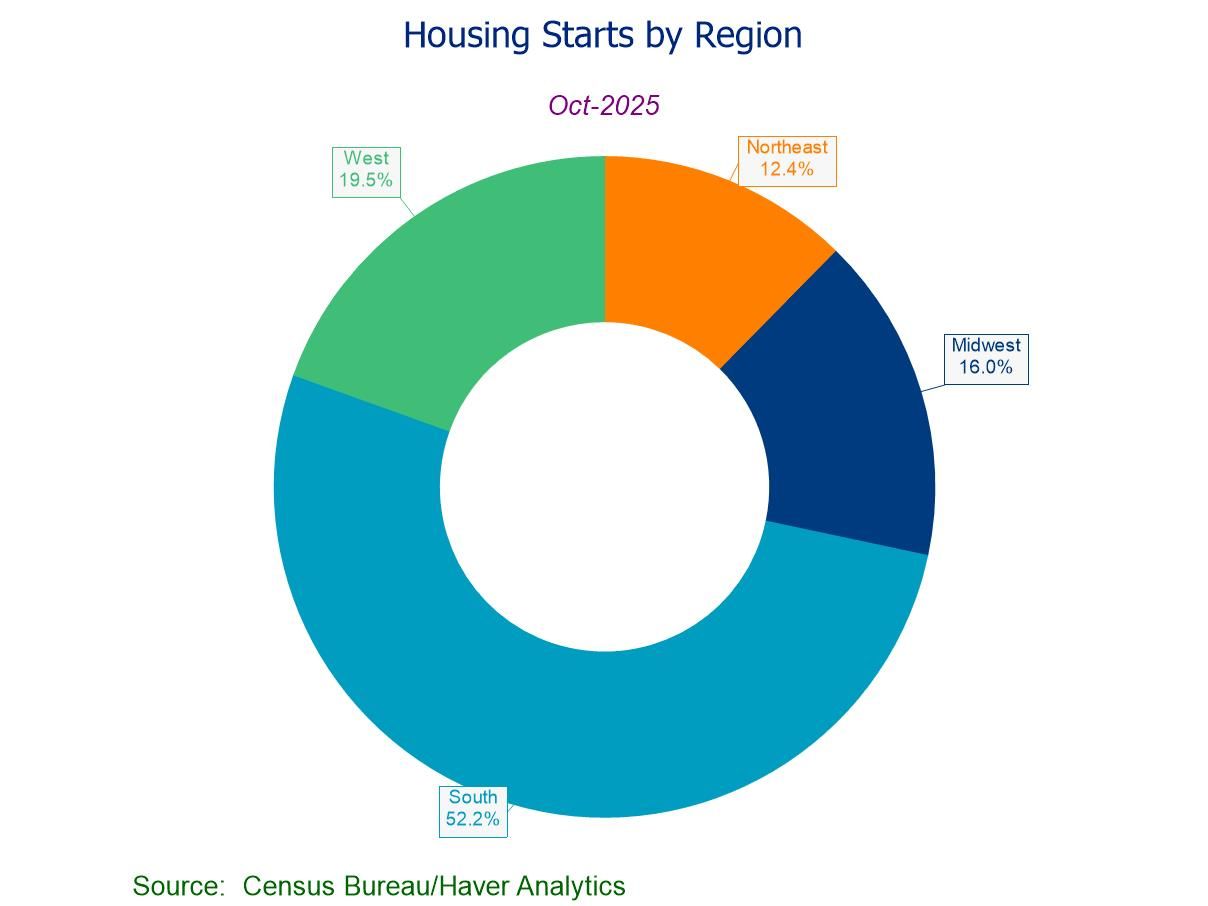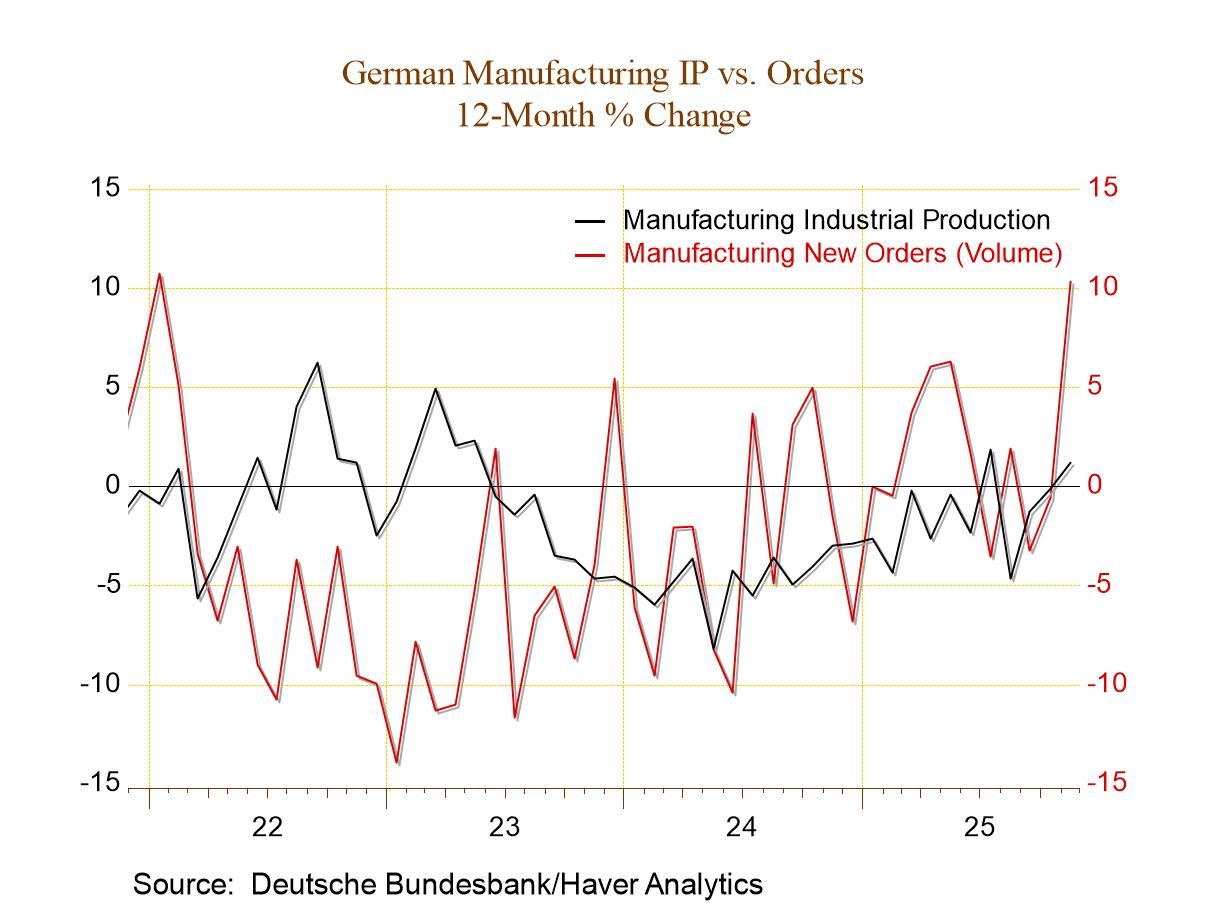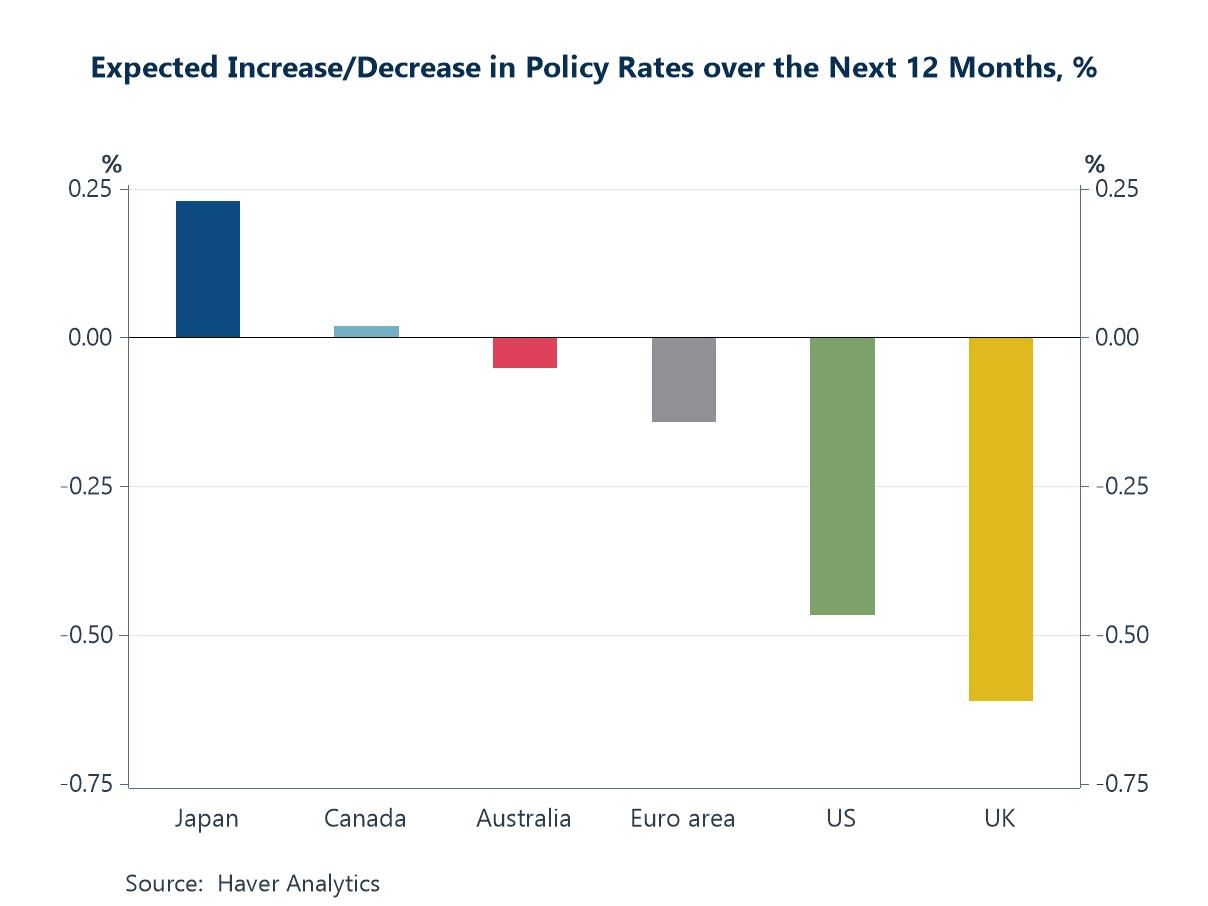 Global| Jun 03 2024
Global| Jun 03 2024S&P Global MFG Shows Slight Upswing- A Move to Neutral

The S&P PMI readings for May 2024 in manufacturing show a tendency for improvement month-to-month. The median PMI value increases to 50.6 from 49.8, While the proportion of reporting units improving moved up to 50% from 33%, leaving that proportion at a dead-neutral level.
PMI levels summarized The global medians for individual average readings sequentially over 12 months, six months, and three months show improvements from 49.3 to 49.4 to 50.2. The gains are steady but very moderate improvements in train with all values clustered closely around ‘50’ which is the break-even point between expansion and contraction for these manufacturing PMI indexes. While the average reading over three months is at 50.2 and the average in the current month is at 50.6, these are values that marginally above 50; it's hard to get too excited about the fact that the indexes are up above 50 again, indicating manufacturing expansion. The median is above the level of 50 for the first time in 22 months – a long stretch for manufacturing contraction. But the average reading for this same group has been above 50 for four months running and had been below 50 for 18 months prior to the start of that string.
The breadth of improvement The proportion of reporters improving over three months moved down to 44% after rising sharply to 94% over six months and sitting at 83% over 12 months. These results have flipped from what had been reported previously as year-over-year weakening in the PMI indexes compared to a year ago had been common. But now, there's been enough improvement that we're looking at year-over-year increases as well as net increases over six months. But since there has been improvement from those lows, the proportion of reporters improving over three months has declined to 44%.
Very neutral neutrality is indicated The rank standing for the diffusion readings of these reporters in the table shows nine of the 18 with values below 50% and nine of the 18 with values above 50%. The median value of all these individual percentile queue standings is also at 50%. All of this underscores the sense of neutrality in this report as the queue standings show that values are at their four-year median values and that the median itself sits at 50% and the number of reporters who are improving on the month is also split at 50/50. And the diffusion values themselves are just beginning to rise above a diffusion level of 50 indicating an extended period of (largely modest) contraction may be coming to an end.
China, the United States, and EMU China, the U.S., and the European Monetary Area all show manufacturing PMIs that are in a definable upswing in the chart. For the euro area, the upswing is about a year old; for the U.S. and China, the upswing is a year and a half to two years in progress. The gradients are still relatively shallow but also relatively stable.

Add central bank polices to the mix... These trends go hand in hand with central banks having made progress on inflation with inflation rates generally having fallen during this period. And while there are still expectations for interest rates to fall, particularly in the euro area, expectations for the U.S. for rate cuts have been peeled back at least for the time being. The reason is that inflation, which had been falling broadly and somewhat more rapidly than expected, has stopped doing that and backtracked slightly in the United States. Progress elsewhere has also slowed. As a result, the outlook for inflation has changed and the outlook for central bank rate cuts has also been peeled back to some extent or is in a state of flux. But now manufacturing is showing more strength than it had in the past and it may not be as reliant on getting rate cuts to continue its improvement in the months ahead. And while manufacturing is improving, goods prices are still weak and for the time being most of the inflation pushback is coming from services.
Robert Brusca
AuthorMore in Author Profile »Robert A. Brusca is Chief Economist of Fact and Opinion Economics, a consulting firm he founded in Manhattan. He has been an economist on Wall Street for over 25 years. He has visited central banking and large institutional clients in over 30 countries in his career as an economist. Mr. Brusca was a Divisional Research Chief at the Federal Reserve Bank of NY (Chief of the International Financial markets Division), a Fed Watcher at Irving Trust and Chief Economist at Nikko Securities International. He is widely quoted and appears in various media. Mr. Brusca holds an MA and Ph.D. in economics from Michigan State University and a BA in Economics from the University of Michigan. His research pursues his strong interests in non aligned policy economics as well as international economics. FAO Economics’ research targets investors to assist them in making better investment decisions in stocks, bonds and in a variety of international assets. The company does not manage money and has no conflicts in giving economic advice.






